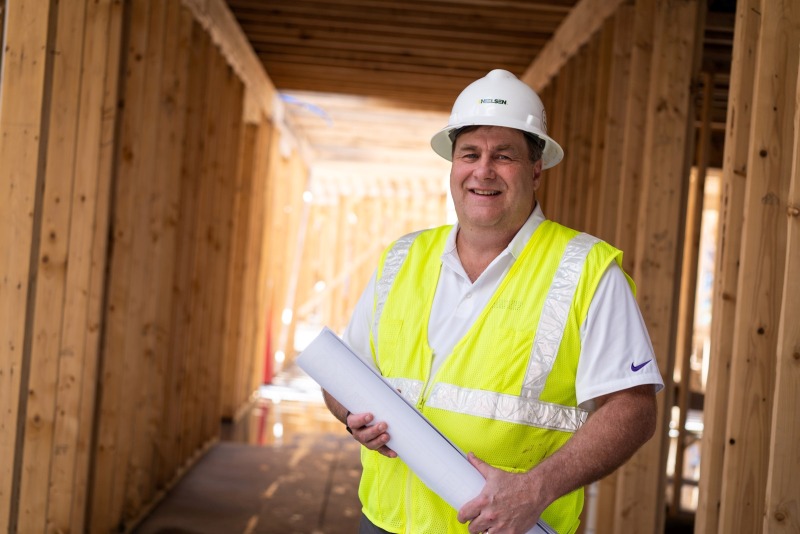You’ve probably heard the phrase “The Federal Reserve raised interest rates” or “The Fed is watching inflation” in the news. But what exactly is the Federal Reserve, and why does it matter to you, your family, or your business here in the Shenandoah Valley?
At F&M Bank, we believe financial literacy empowers people to make confident decisions. In this article, we’ll break down the Federal Reserve in plain language: what it does, how it works, and how its decisions affect your money, from loan rates to savings accounts.
What Is the Federal Reserve?
The Federal Reserve, often referred to as “the Fed,” is the central bank of the United States. Congress created the institution in 1913 to help stabilize the nation’s economy and financial systems.
The Fed’s responsibilities include:
- Managing inflation
- Supervising and regulating banks
- Maintaining financial system stability
- Providing financial services to banks and the U.S. government
- Setting the federal funds rate, which influences other interest rates
Think of the Federal Reserve as the thermostat of the U.S. economy. It doesn’t create heat or cold on its own, but it adjusts the temperature to keep conditions just right—raising interest rates to cool things down when inflation heats up, and lowering them to warm things up when growth slows.
Why Does the Federal Reserve Exist?
Before the Fed was created, the U.S. experienced frequent bank failures, unstable markets, and panics that hurt both businesses and everyday families.
The Federal Reserve was established to bring structure and safety to the financial system. Its core mission today is to promote:
- Maximum employment
- Stable prices (low inflation)
- Moderate long-term interest rates
These goals are often referred to as the Fed’s “dual mandate,” and they guide its decision-making. By carefully balancing these priorities, the Fed works to keep the economy running smoothly—neither too hot (which can lead to inflation and overheated markets) nor too cold (which can cause unemployment, slower growth, and recessions). Its role is especially important during times of uncertainty or economic transition.
How the Federal Reserve Makes Decisions
The Fed is made up of:
- The Board of Governors (7 members appointed by the President of the United States)
- 12 Regional Federal Reserve Banks (including one in Richmond, VA, which serves our area)
- The Federal Open Market Committee (FOMC)
The FOMC meets about eight times a year to review economic data and decide whether to raise, lower, or hold interest rates. These meetings and their decisions can impact the financial choices you make every day.
How the Federal Reserve Affects Interest Rates
One of the Fed’s most important tools is the federal funds rate, which is the interest rate banks charge each other to lend money overnight.
So, how does this affect you?
When the Fed raises rates, borrowing money becomes more expensive:
- Mortgage rates go up
- Auto loan rates increase
- Credit card interest rises
- Business loan costs climb
When the Fed lowers rates, borrowing becomes cheaper:
- Mortgages and auto loans become more affordable
- Small businesses can expand with lower-cost loans
- Consumers are more likely to spend, boosting the economy
Visit our Understanding Mortgage Interest Rates guide to learn more about how this plays out in home financing.
How the Federal Reserve Fights Inflation
Inflation happens when prices rise across the board, like groceries, gas, rent, and more. Some inflation is normal, but too much, too fast, can make life harder for everyone.
When inflation gets high, the Fed usually raises interest rates. This discourages borrowing and slows spending, which helps cool inflation.
On the other hand, if inflation is too low or the economy is shrinking, the Fed may lower interest rates to encourage spending and investing.
Small business owners, in particular, are affected by inflation. Check out our blog on Understanding Inflation and Small Business for more insights.
How Fed Decisions Affect Your Everyday Finances
Here are a few ways Federal Reserve policies show up in your daily life:
1. Home Loans
Mortgage interest rates tend to move in the same direction as the Fed’s actions. A rise in the Fed’s rate could mean your new home loan costs more in interest. Conversely, lower rates can lead to better terms.
2. Savings Accounts
Good news for savers, when the Fed raises rates, banks can often offer higher interest on savings accounts and CDs. You earn more on the money you’ve set aside.
3. Credit Cards
Most credit cards have variable interest rates tied to the Fed. When the Fed raises rates, your monthly interest charges go up if you carry a balance.
4. Business Loans
Whether you’re expanding your storefront in Staunton or upgrading equipment in Winchester, interest rates directly impact your business loan costs. High rates may delay projects; lower rates can open new opportunities.
5. Job Market
Fed policies can also affect your employment opportunities. By managing the balance between inflation and growth, the Fed plays a role in how many jobs are available and how fast wages grow.
Who Leads the Federal Reserve?
The Federal Reserve is independent from political parties, though its leaders are appointed by the President and confirmed by the Senate.
The Chair of the Federal Reserve is responsible for guiding national monetary policy and speaking publicly about the economy. These updates can move markets and influence economic confidence.
The Fed and Financial Stability
Beyond rates and inflation, the Fed also works behind the scenes to make sure the banking system is safe and sound. It supervises large banks, monitors risk, and steps in during financial crises to prevent wider fallout.
During major events, like the 2008 financial crisis or the early days of the COVID-19 pandemic, the Fed has provided emergency support to keep money flowing and prevent panic.
What the Fed Doesn’t Do
While powerful, the Fed doesn’t:
- Set your personal loan rates directly (your bank does, based partly on Fed policy)
- Decide on tax policy or government spending (that responsibility belongs to Congress)
- Determine your credit card interest rate (that’s your card issuer, based on your credit profile)
Why This Matters for Virginia Families and Businesses
Whether you live in Harrisonburg or run a business in Waynesboro, understanding the Fed gives you a clearer picture of why rates change, why inflation rises, or why the economy feels hot or cold.
It’s not just about Wall Street. It’s about how much it costs to buy a home, run your business, or save for the future.
Bottom Line: Why the Fed Matters to You
The Federal Reserve plays a critical role in keeping the U.S. economy balanced.
Its decisions can have a significant influence on:
- How much it costs to borrow money
- How much you earn on savings
- The pace of inflation
- The strength of the job market
While the Fed can seem far away, its actions ripple through every town in Virginia, including our own Shenandoah Valley communities.
Need Help Understanding What It Means for You?
At F&M Bank, we’re here to make complex financial topics approachable. Whether you’re planning a major purchase or adjusting your business goals, we can help you understand how Fed policy might impact your finances.
Contact our team or stop by your local branch in Harrisonburg, Bridgewater, Broadway, Edinburg, Timberville, or Stuarts Draft—we’re here to help you make sense of it all.



